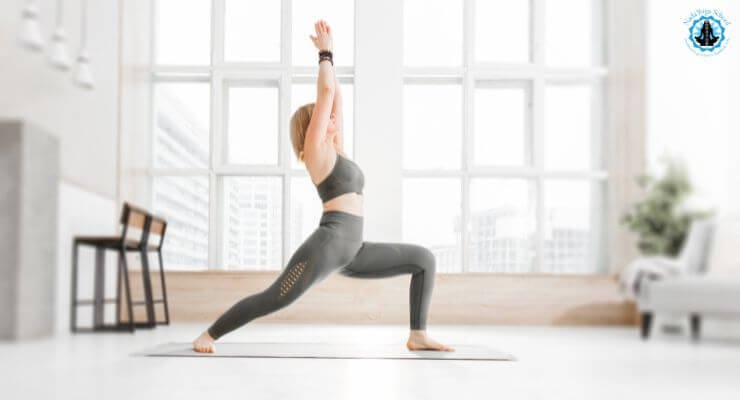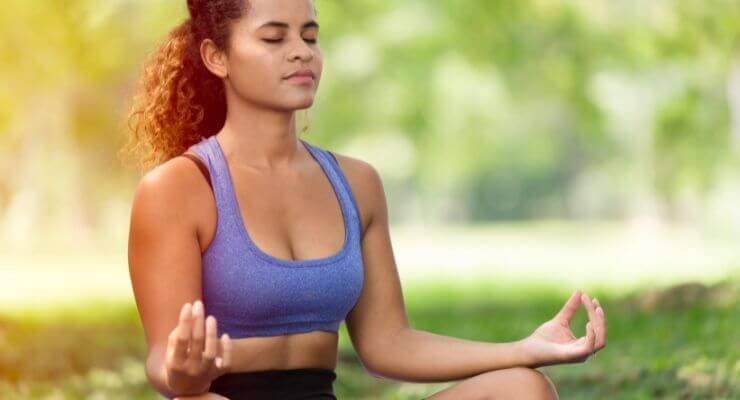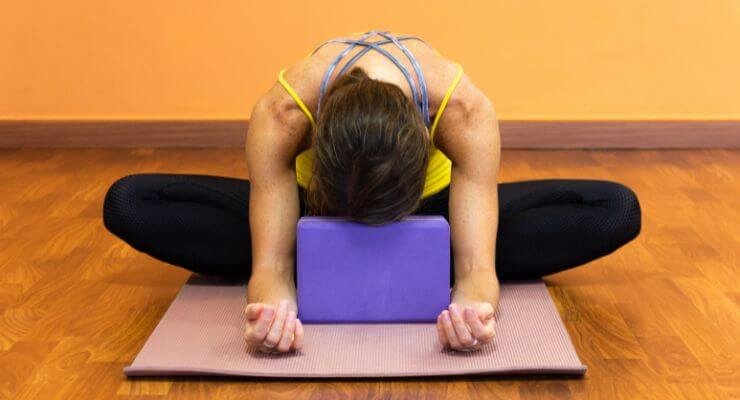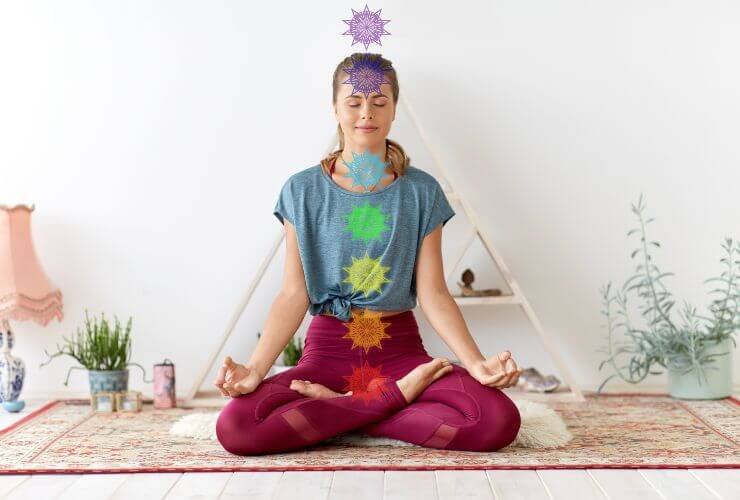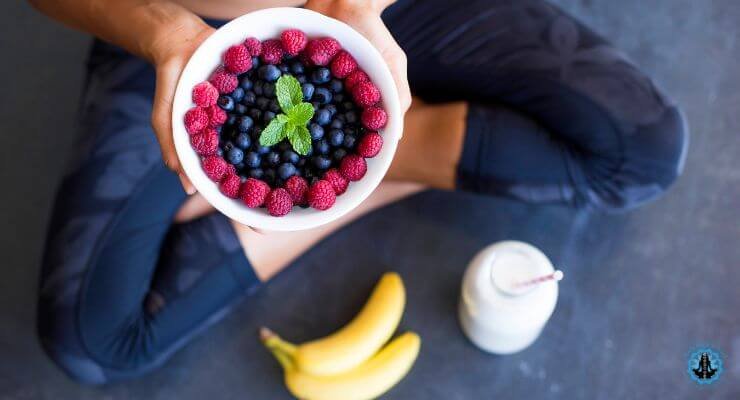Vinyasa yoga is a popular contemporary style of yoga that incorporates a sequence of poses coordinated with the breath to achieve a continuous flow. The term “vinyasa” comes from the Sanskrit word “nyasa,” which means “to place,” and “vi,” which means “in a special way.” In this style of yoga, the poses are linked together in a smooth, flowing manner, creating a dynamic and challenging practice.
One of the key features of vinyasa yoga is the synchronization of breath and movement. Each pose is synchronized with an inhale or an exhale, creating a continuous flow of movement. This synchronization helps to calm the mind and create a meditative state, while also building strength, flexibility, and balance. Vinyasa yoga can be practiced at any level, from beginner to advanced, and can be modified to suit individual needs and abilities.
Whether you are new to yoga or a seasoned practitioner, vinyasa yoga offers a challenging and rewarding practice that can help to improve both physical and mental wellbeing. With its focus on breath, movement, and flow, vinyasa yoga is a dynamic and energizing practice that can help to build strength, increase flexibility, and reduce stress.
What is Vinyasa Yoga?
Vinyasa yoga is a popular contemporary style of yoga that involves moving from one pose to another seamlessly, using breath. It is also known as “flow” yoga because of the smooth way the poses run together. Vinyasa is a Sanskrit word that means “to place in a special way,” and in this style of yoga, the poses are arranged in a specific sequence that is synchronized with the breath.
Unlike other styles of yoga, such as Hatha or Iyengar, where poses are held for a longer period, Vinyasa yoga involves continuous movement between poses. This flow of movement is excellent for getting the heart rate going and working up a sweat. It can also help increase flexibility, strength, stability, calmness, and focus.
In a typical Vinyasa yoga class, the teacher will guide students through a series of poses, each one flowing smoothly into the next. The class will usually start with a warm-up sequence, followed by a series of standing poses, seated poses, backbends, and inversions. The class will end with a cool-down sequence and final relaxation pose.
Vinyasa yoga is a dynamic and challenging style of yoga that is suitable for all levels, from beginners to advanced practitioners. It offers a variety of postures, and no two classes are ever alike, making it an exciting and engaging practice.
Origins of Vinyasa Yoga
Vinyasa yoga is a modern form of yoga that has its roots in ancient Indian traditions. The term “vinyasa” is derived from the Sanskrit word “nyasa,” which means “to place,” and the prefix “vi,” which means “in a special way.” This style of yoga is characterized by the linking of breath with movement, which creates a flowing sequence of poses.
The origins of vinyasa yoga can be traced back to the teachings of Sri T. Krishnamacharya, who is considered to be the father of modern yoga. Krishnamacharya was a renowned yoga teacher who lived in India during the 20th century. He developed a style of yoga that emphasized the importance of breath control and the integration of movement with breath.
One of Krishnamacharya’s most famous students was Pattabhi Jois, who went on to develop the Ashtanga Vinyasa Yoga system. Ashtanga Vinyasa Yoga is a rigorous and physically demanding style of yoga that involves a set sequence of poses performed in a specific order. This system is often considered to be the foundation of modern vinyasa yoga.
In the 1980s and 1990s, vinyasa yoga began to gain popularity in the West, particularly in the United States. This was due in part to the influence of teachers like Shiva Rea and Baron Baptiste, who developed their own styles of vinyasa yoga that emphasized creativity and self-expression.
Today, vinyasa yoga is one of the most popular styles of yoga in the world, with millions of practitioners around the globe. It continues to evolve and adapt to the needs and interests of modern practitioners, while remaining true to its ancient roots.
Key Principles of Vinyasa Yoga
Vinyasa yoga is a dynamic and flowing style of yoga that emphasizes breath-synchronized movement, sequencing and transitions, and focus and meditation. Here are some key principles of vinyasa yoga:
Breath-Synchronized Movement
In vinyasa yoga, each movement is synchronized with the breath. This means that you inhale and exhale as you move through each pose. The breath is used as a tool to help you move more mindfully and with greater awareness. By syncing your breath with your movements, you can create a sense of flow and ease in your practice.
Sequencing and Transitions
Vinyasa yoga is known for its creative sequencing and smooth transitions between poses. In a vinyasa class, you can expect to move through a series of poses that are linked together in a logical and intuitive way. The sequencing of poses is designed to build strength, flexibility, and balance in the body, while also creating a sense of flow and rhythm.
Focus and Meditation
In vinyasa yoga, there is an emphasis on cultivating focus and concentration. By staying present and focused on the breath and the movements of the body, you can quiet the mind and cultivate a sense of inner peace and calm. Many vinyasa classes also include elements of meditation and mindfulness, such as seated meditation or guided visualization.
Overall, vinyasa yoga is a powerful and transformative style of yoga that can help you build strength, flexibility, and balance in both the body and the mind. By practicing vinyasa yoga regularly, you can cultivate greater awareness, presence, and peace in your life.
Understanding the Vinyasa Flow
Vinyasa yoga is a style of yoga that emphasizes the connection between breath and movement. In a Vinyasa class, the practitioner moves through a series of poses, or asanas, in a fluid, continuous sequence, with each movement synchronized with either an inhale or an exhale. This flow creates a moving meditation that can help to quiet the mind and increase body awareness.
The Concept of Linking Breath and Movement
The heart of Vinyasa yoga is the connection between breath and movement. Each movement is synchronized with either an inhale or an exhale, which helps to create a sense of flow and rhythm in the practice. This connection between breath and movement can help to quiet the mind and increase body awareness, as the practitioner becomes more attuned to the sensations in their body.
The Significance of Sun Salutations (Surya Namaskar)
Sun Salutations, or Surya Namaskar, are a series of poses that are often used as a warm-up in Vinyasa yoga classes. The sequence consists of a series of poses that are linked together with the breath, and are designed to help warm up the body and prepare it for the more challenging poses that come later in the practice.
Sun Salutations are an integral part of Vinyasa yoga, as they help to create a sense of flow and rhythm in the practice. They are also a great way to build strength and flexibility in the body, as they work all of the major muscle groups.
The Dynamic and Rhythmic Nature of Vinyasa
Vinyasa yoga is a dynamic and rhythmic practice that emphasizes the connection between breath and movement. The practice is designed to create a sense of flow and rhythm in the body, which can help to quiet the mind and increase body awareness.
The dynamic nature of Vinyasa yoga means that each class is different, as the teacher can create a unique sequence of poses that is tailored to the needs of the students. This can help to keep the practice fresh and engaging, and can help to prevent boredom and burnout.
Benefits of Vinyasa Yoga
Vinyasa yoga has numerous benefits for both physical and mental health. Here are some of the benefits of practicing vinyasa yoga regularly.
Physical Benefits
Vinyasa yoga can help improve overall physical health by increasing strength, flexibility, and balance. It can also help with weight loss and cardiovascular health. Here are some of the physical benefits of vinyasa yoga:
- Increases Strength: Vinyasa yoga involves holding poses for several breaths, which helps build strength in the muscles. The repetitive movement also helps improve endurance.
- Improves Flexibility: Vinyasa yoga involves a range of poses that can help improve flexibility in the body. This can help reduce the risk of injury and improve overall mobility.
- Enhances Balance: Vinyasa yoga involves balancing poses that can help improve overall balance and stability. This can be particularly beneficial for older adults who may be at risk of falls.
- Aids in Weight Loss: Vinyasa yoga can be a great way to burn calories and lose weight. The flowing movements and continuous transitions between poses can help increase heart rate and boost metabolism.
Mental Benefits
Vinyasa yoga can also have several mental health benefits, including reducing stress and anxiety and improving overall mood. Here are some of the mental benefits of vinyasa yoga:
- Reduces Stress and Anxiety: Vinyasa yoga involves deep breathing and meditation, which can help reduce stress and anxiety. The practice can also help increase mindfulness and promote relaxation.
- Improves Mood: Vinyasa yoga can help improve overall mood and reduce symptoms of depression. The physical activity and deep breathing can help increase endorphins and other feel-good hormones in the body.
- Boosts Mental Clarity: Vinyasa yoga can help improve mental clarity and focus. The practice can help reduce distractions and increase concentration, which can be particularly beneficial for those with ADHD or other attention disorders.
Overall, vinyasa yoga can be a great way to improve overall physical and mental health. By incorporating regular vinyasa yoga practice into a healthy lifestyle, individuals can experience a range of benefits that can help improve overall quality of life.
Different Styles of Vinyasa Yoga
Vinyasa yoga is a dynamic and flowing style of yoga that links breath with movement. There are several different styles of vinyasa yoga, each with its own unique characteristics. Some of the most popular styles of vinyasa yoga include:
Power Vinyasa Yoga
Power vinyasa yoga is a vigorous and athletic style of yoga that emphasizes strength, flexibility, and endurance. It is often practiced in a heated room and includes challenging poses such as arm balances and inversions. Power vinyasa yoga is great for those who want a challenging workout and are looking to build strength and stamina.
Slow Flow Vinyasa Yoga
Slow flow vinyasa yoga is a gentler and more meditative style of vinyasa yoga. It emphasizes slow, controlled movements and longer holds in each pose. Slow flow vinyasa yoga is great for beginners or those who want to focus on mindfulness and relaxation.
Ashtanga Vinyasa Yoga
Ashtanga vinyasa yoga is a traditional style of yoga that follows a specific sequence of poses. It is a physically demanding practice that emphasizes breath, movement, and meditation. Ashtanga vinyasa yoga is great for those who want a more structured and disciplined practice.
Jivamukti Vinyasa Yoga
Jivamukti vinyasa yoga is a modern and dynamic style of yoga that incorporates music, chanting, and spiritual teachings into the practice. It is a physically and mentally challenging practice that emphasizes compassion, mindfulness, and activism. Jivamukti vinyasa yoga is great for those who want a more holistic and spiritual approach to yoga.
Yin/Yang Vinyasa Yoga
Yin/yang vinyasa yoga is a balanced and harmonious style of yoga that combines the dynamic movements of vinyasa yoga with the passive stretches of yin yoga. It is a great practice for those who want to balance strength and flexibility, and who want to focus on both the physical and mental aspects of yoga.
Overall, there are many different styles of vinyasa yoga to choose from, each with its own unique benefits and challenges. Whether you are looking for a challenging workout or a more meditative practice, there is a style of vinyasa yoga that is right for you.
How to Practice Vinyasa Yoga
Starting Your Practice
Before starting a vinyasa yoga practice, it is important to have a basic understanding of yoga poses and proper alignment. It is recommended to start with a beginner’s class and work up to more advanced classes as you become more comfortable with the practice.
Finding a Class
To find a vinyasa yoga class, one can search online for local yoga studios or gyms that offer yoga classes. It is important to read reviews and research the instructor’s qualifications before attending a class. When attending a class, it is recommended to arrive early to set up your mat and inform the instructor of any injuries or limitations.
Home Practice Tips
For those who prefer to practice at home, there are many online resources available that offer vinyasa yoga classes. It is important to create a dedicated space for practice and to have a basic understanding of yoga poses and proper alignment. It is recommended to start with shorter classes and work up to longer classes as you become more comfortable with the practice.
To enhance your home practice, consider incorporating the following tips:
- Use props such as blocks and straps to deepen poses and prevent injury.
- Set an intention for your practice to help focus the mind.
- Practice in a quiet and peaceful space to minimize distractions.
- Listen to your body and modify poses as needed.
- End your practice with a few minutes of relaxation or meditation to calm the mind and body.
Vinyasa vs. Other Yoga Styles
Contrasting Vinyasa with Hatha, Ashtanga, and other styles
Vinyasa yoga is a dynamic and flowing style of yoga that synchronizes breath with movement. Unlike other yoga styles, such as Hatha and Ashtanga, Vinyasa yoga does not have a set sequence of poses. Instead, each class is unique and the teacher creates a sequence of poses that flow together in a specific way.
Hatha yoga, on the other hand, is a slower-paced style of yoga that focuses on holding poses for longer periods of time. Ashtanga yoga is a more structured and rigorous style of yoga that follows a specific sequence of poses.
Common elements and differences in approach
Despite the differences in approach, all yoga styles share a common goal: to unite the mind, body, and spirit. Each style achieves this goal in its own way, with Vinyasa yoga emphasizing the flow of movement, Hatha yoga focusing on holding poses, and Ashtanga yoga following a set sequence of poses.
One of the key differences between Vinyasa yoga and other styles is the emphasis on linking breath with movement. This creates a meditative and mindful practice that helps to calm the mind and reduce stress.
How to choose the right yoga style for your needs
When choosing a yoga style, it is important to consider your individual needs and goals. If you are looking for a more dynamic and challenging practice, Vinyasa yoga may be a good fit. If you are looking for a slower-paced practice that emphasizes holding poses, Hatha yoga may be a better choice.
It is also important to consider your experience level and any injuries or physical limitations you may have. If you are new to yoga or have an injury, it may be best to start with a gentle Hatha or beginner-level Vinyasa class.
Overall, the key is to find a yoga style that resonates with you and your individual needs and goals.
Vinyasa Yoga for All Levels
Vinyasa yoga is a dynamic practice that can be adapted to suit practitioners of all levels. Here are some tips for adapting your practice to your individual needs.
Adaptations for beginners and those with limitations
If you’re new to vinyasa yoga or have physical limitations, there are modifications you can make to ensure a safe and comfortable practice. Some adaptations to consider include:
- Using props such as blocks and straps to support your body in poses
- Taking breaks between poses to rest and recover
- Simplifying poses by reducing their intensity or duration
- Focusing on breath and alignment rather than achieving the fullest expression of a pose
Remember that vinyasa yoga is about linking breath with movement, so even if you’re not able to do every pose, you can still benefit from the practice by moving mindfully and with intention.
Challenging options for advanced practitioners
For more experienced practitioners looking to deepen their practice, there are plenty of challenging options to explore. Some ways to challenge yourself during a vinyasa practice include:
- Adding more advanced poses or transitions
- Increasing the tempo of your practice to elevate your heart rate and build endurance
- Holding poses for longer periods of time to build strength and stability
- Incorporating arm balances, inversions, and other advanced poses
Remember to listen to your body and respect your limits. Pushing yourself too hard can lead to injury and may hinder your progress in the long run.
Practicing Vinyasa at every stage of your yoga journey
Whether you’re a beginner or an advanced practitioner, vinyasa yoga can be a valuable part of your yoga journey. By adapting your practice to your individual needs and goals, you can continue to challenge yourself and grow in your practice.
Remember that yoga is a personal journey, and there’s no one-size-fits-all approach. By staying present and mindful in your practice, you can discover what works best for you and continue to evolve and grow as a practitioner.
Potential Risks and Precautions
Although vinyasa yoga is generally considered safe for most people, there are some potential risks and precautions to keep in mind. It is important to consult with a healthcare provider before starting any new exercise program, especially if you have any medical conditions or injuries.
One potential risk of vinyasa yoga is overuse injuries. Because vinyasa yoga classes typically involve flowing from one pose to another, there is a risk of repetitive strain injuries, such as tendinitis or bursitis. It is important to listen to your body and not push yourself beyond your limits, especially if you are new to yoga.
Another potential risk of vinyasa yoga is injury to the wrists, shoulders, and lower back. Many vinyasa yoga poses, such as plank pose and chaturanga, require a significant amount of upper body strength and can put stress on these areas of the body. It is important to use proper alignment and modify poses as needed to avoid injury.
It is also important to be aware of the potential risks of practicing vinyasa yoga in a heated room. Some vinyasa yoga classes are held in rooms heated to temperatures of 90 degrees or higher, which can increase the risk of dehydration, heat exhaustion, and heat stroke. It is important to stay hydrated, take breaks as needed, and listen to your body in these types of classes.
Finally, it is important to be aware of the potential risks of practicing vinyasa yoga if you are pregnant. Some poses, such as twists and inversions, are not recommended for pregnant women. It is important to consult with a healthcare provider and a qualified prenatal yoga teacher before practicing vinyasa yoga during pregnancy.
Frequently Asked Questions
What is the difference between vinyasa yoga and other types of yoga?
Vinyasa yoga is a type of yoga that focuses on the synchronization of breath and movement. Unlike other types of yoga, where the poses are held for a longer period, in Vinyasa yoga, the poses are linked together in a flow. This creates a dynamic and continuous movement that helps to build strength, flexibility, and stamina.
What is the Vinyasa flow sequence?
The Vinyasa flow sequence is a specific sequence of poses that are linked together with the breath. The sequence typically starts with a sun salutation, which is a series of poses that warm up the body. This is followed by a standing sequence, which includes a variety of standing poses. The sequence then moves to the floor, where students work on seated poses, backbends, and inversions. The sequence ends with a final relaxation pose.
Is Vinyasa yoga suitable for beginners?
Vinyasa yoga can be suitable for beginners, but it is important to find a class that is appropriate for your level of experience. Many studios offer beginner-friendly Vinyasa classes that focus on the basics of the practice. It is also important to listen to your body and take breaks when needed.
What are the benefits of practicing Vinyasa yoga?
Practicing Vinyasa yoga can have many benefits, including improved strength, flexibility, and balance. It can also help to reduce stress, increase focus and concentration, and improve overall well-being. The continuous movement and synchronization of breath and movement can also help to create a meditative and calming effect.
Is Vinyasa yoga more challenging than other types of yoga?
Vinyasa yoga can be more challenging than other types of yoga because of the continuous movement and the variety of poses included in the sequence. However, the level of challenge can vary depending on the specific class and the level of experience of the student.
What level of experience is required for Vinyasa yoga?
Vinyasa yoga can be practiced by students of all levels, but it is important to find a class that is appropriate for your level of experience. Many studios offer beginner-friendly Vinyasa classes that focus on the basics of the practice. It is also important to listen to your body and take breaks when needed.

